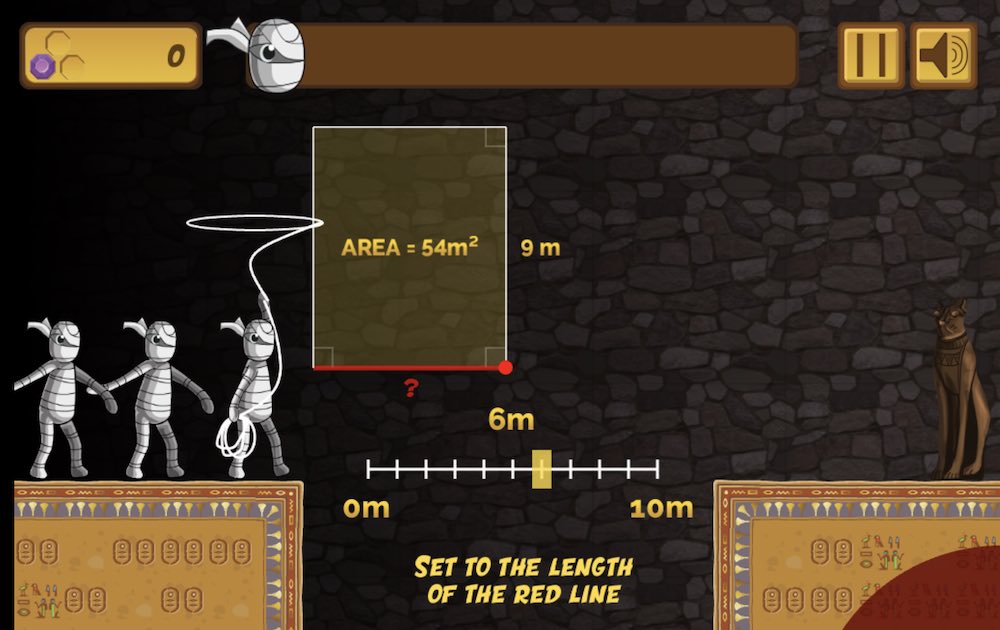By Paul Carter (PhD), VP of Product
Game-Based Learning and Gamification: What Are They?
In the ever-changing landscape of educational technology, two terms are often used interchangeably: “game-based learning” and “gamification”. Although both concepts leverage the principles of game design to enhance learning experiences, they also have very distinct differences. Here at Mangahigh, where cool maths games are our specialty, understanding these differences is an essential part of our pedagogical design. Game-based learning and gamification are not the same thing! In this article, we’ll delve into the nuances of game-based learning and gamification, highlight their similarities and differences, and give some examples of how to distinguish between them on any educational web platform.
Game-Based Learning
Game-based learning involves using actual games as a means of delivering learning. Mangahigh has a number of such games. These games are designed with educational objectives in mind, and they seamlessly integrate both content and skills acquisition into engaging gameplay. The primary focus of game-based learning is to create an immersive environment where players actively participate, solve problems, and make decisions, all of which lead to learning valuable concepts.
In game-based learning, educational content is embedded within the game mechanic itself. For example, in one of Mangahigh’s many awesome maths games, Pyramid Panic, players are required to escape from within a pyramid using principles of geometry and mensuration. They need to make decisions based on given information, and they experience the consequences of these decisions. This approach is most effective when learning is intrinsic to the gameplay, making it a seamless and enjoyable experience.

Gamification
Gamification, on the other hand, involves applying game elements and mechanics to non-game contexts, such as educational activities. The goal is to motivate and engage learners by introducing elements like points, badges, leaderboards, and challenges. Rather than a fully-fledged game, gamification uses game-like elements to enhance motivation and participation within a learning environment.
For instance, in the Mangahigh platform, there are all sorts of elements that gamify the learning experience. Examples include: a points system that rewards students for completing quizzes; bronze, silver and gold medal awards for achievement; progress indicators to visualise the learning journey; and leaderboards that encourage healthy competition. Gamification also generally relies on extrinsic motivation, where learners are driven by rewards or recognition, as opposed to the inherent engagement found in game-based learning.
How to Quickly Distinguish Between the Two
| Game-Based Learning | Gamification | |
|---|---|---|
| Content Integration | Educational content is directly embedded within the game mechanic. Learning happens through gameplay. | Educational content is separate from the game-like elements. Game mechanics are layered onto existing educational activities. |
| Objective | The main objective is to learn by actively participating in the game’s challenges and scenarios. | The primary goal is to enhance motivation, engagement, and participation in educational activities through game elements. |
| Motivation | Intrinsic motivation is high, as learners engage with content naturally through gameplay. | Extrinsic motivation is utilised, as learners are motivated by rewards or recognition associated with game-like elements. |
| Immersion | Offers a higher level of immersion as learners are fully engaged in the game world and its challenges. | Provides a moderate level of immersion; learners are still primarily engaged with the core educational content. |
Why Is It Important?
Very often edtech providers confuse game-based learning and gamification. Whilst gamification can be a valuable tool for improving engagement and motivation, when overused it can distract learners from the core objective: learning. These days many education platforms are littered with game elements like customisation, avatars, coins or gems, streaks and shops – sometimes so much so that it is difficult to see the educational purpose. Here at Mangahigh we use game elements responsibly in order to generate engagement and enthusiasm, whilst simultaneously being mindful that these are secondary to our fundamental aim of helping learners to master mathematics. We believe this balance is perfectly struck in our hundreds of online maths quizzes and many maths games that leverage game-based learning.
Why don’t you give Mangahigh a try today and see for yourself?